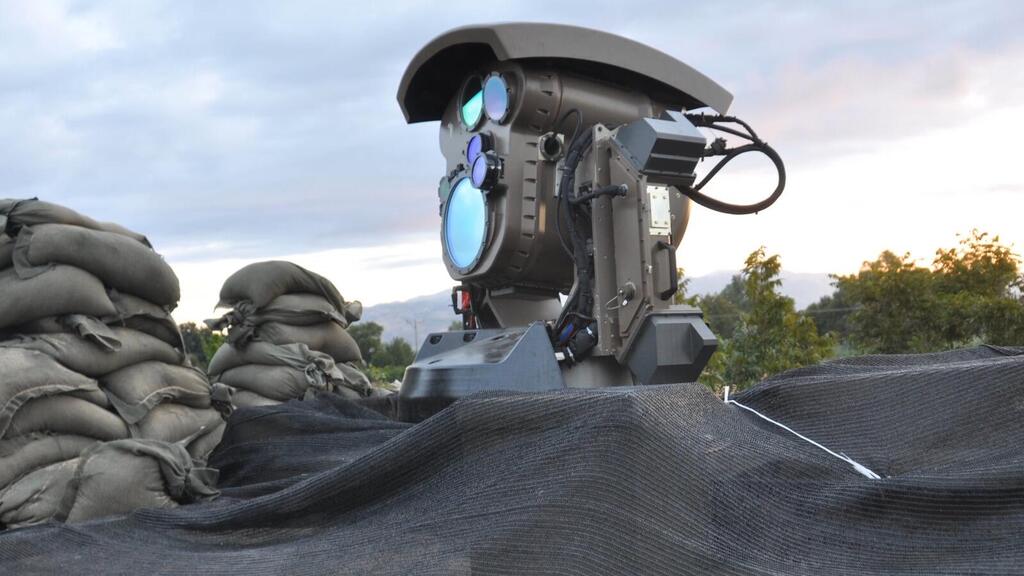Israel has revealed for the first time the operational use of a new laser-based air defense system, signaling a potential turning point in the country’s efforts to counter threats from drones, rockets and missiles. During the recent fighting in Lebanon, the previously undisclosed system successfully intercepted 30 to 40 drones, most of them launched by Hezbollah.
The announcement marks the debut of a new phase in defense technology. Though the laser platform is currently in a basic stage, its implications—military, strategic and psychological—are significant.
(Video: IDF Spokesperson's Unit)
Here’s what to know about Israel’s laser defense technology and what might come next:
What was revealed this week?
The Israeli military confirmed that a mobile laser system, developed by Rafael Advanced Defense Systems, was used operationally for the first time during the war. The system, which emits high-energy beams of light to neutralize unmanned aerial vehicles (UAVs), was introduced in late 2023 and has since downed dozens of drones at short range.
While the system’s power output was not disclosed, it is estimated to operate at several tens of kilowatts. The platform is based on foreign-developed laser technology and represents an advanced prototype among Rafael’s various laser programs developed over the past 15 years.
Has Israel used laser weapons before?
Yes. Elbit Systems developed “Sky Shield,” a laser-based missile defense system mounted on Israeli commercial aircraft and the prime minister’s official plane. It was designed in response to a 2002 shoulder-fired missile attack on an Israeli airliner in Kenya. A smaller version, “Mini-MUSIC,” is used to protect executive jets and helicopters.
How does this relate to the Iron Beam system?
“Iron Beam” is a more powerful and complex laser system still in development. Intended to intercept rockets, mortars, cruise missiles and drones, it will complement existing systems such as Iron Dome, David’s Sling and Arrow. The stationary system is designed to integrate with Iron Dome batteries and is expected to become operational within the coming year.
An artificial intelligence component will help determine whether an incoming threat can be neutralized by a laser or requires a missile interceptor. Defense officials see Iron Beam as a cost-effective and rapid-response component of Israel’s layered air defense strategy.
Who is behind the development?
Iron Beam was developed by the Defense Ministry’s Research and Development Directorate, with Rafael as the lead contractor and Elbit responsible for the laser systems. In October, then-Defense Ministry Director General Eyal Zamir signed a $2 billion procurement deal for thousands of Iron Beam units. An additional $1.2 billion in U.S. military aid is earmarked for future purchases.
Zamir described the deal as ushering in “a new era on the battlefield—an era of lasers.”
How does a laser weapon work?
A laser beam is a focused, high-intensity stream of light capable of reaching long distances and burning through targets. Unlike kinetic weapons, it is silent, invisible, and essentially inexhaustible. While a typical consumer laser pointer operates at less than 1 watt, Iron Beam is rated at 100,000 watts. By contrast, earlier chemical laser collaborations between the U.S. and Israel produced beams in the tens of millions of watts.
What are the advantages of laser defense systems?
• Speed: Hits targets at the speed of light
• Precision: Extremely accurate
• Stealth: Silent and invisible
• Cost: Approximately $5 per shot, compared to $50,000 for an Iron Dome interceptor
What are the drawbacks?
Laser weapons have limited power compared to traditional arms and are less effective over long distances. Their maximum effective range is about 10 kilometers—significantly shorter than Iron Dome’s 40 kilometers. They are also susceptible to weather and visibility conditions and cannot target multiple threats simultaneously.
Is this science fiction come to life?
Not exactly. Science fiction often depicts handheld laser weapons or blasters, which are not currently feasible due to the need for heavy power sources and cooling systems. Iron Beam is stationary, large and requires a powerful generator. Additionally, real laser weapons burn rather than explode targets, meaning they must stay locked on for several seconds—limiting their use against fast-moving threats like jets or ballistic missiles.
Is Israel the first to deploy lasers in combat?
Laser weapons have been in development worldwide since the 1990s. Israel and the United States collaborated on the Nautilus project, a high-powered chemical laser system, but it was shelved in 2011. The U.S. Navy has since deployed electric laser systems on some warships, and the United Kingdom has developed a comparable system called “DragonFire.” Reports indicate China has also developed laser weapons and may have exported them to Iran.
Get the Ynetnews app on your smartphone: Google Play: https://bit.ly/4eJ37pE | Apple App Store: https://bit.ly/3ZL7iNv
Nonetheless, the Israel Defense Forces are poised to become the first military to integrate laser systems into its operational air defense.
Was the October 7 Hamas attack connected to this development?
According to documents recovered in Gaza, Hamas chose the date for its October 7 assault out of concern that Israel was close to deploying laser systems. Military officials say the deployment of Iron Beam batteries near the border has strategic and psychological impact on enemy decision-making.
What’s next for Israeli laser weapons?
Development goals include increasing laser power to 500 kilowatts or more, enabling the interception of ballistic missiles. Future systems may be mobile and deployable across Israel and beyond. Rafael has introduced Lite Beam, a vehicle-mounted laser, and Naval Iron Beam, designed for maritime platforms. Defense industries are also exploring laser cannons for tanks and armored personnel carriers, while Elbit is working on airborne lasers capable of targeting fast aerial or ground threats—evoking scenes reminiscent of "Star Wars" dogfights.





